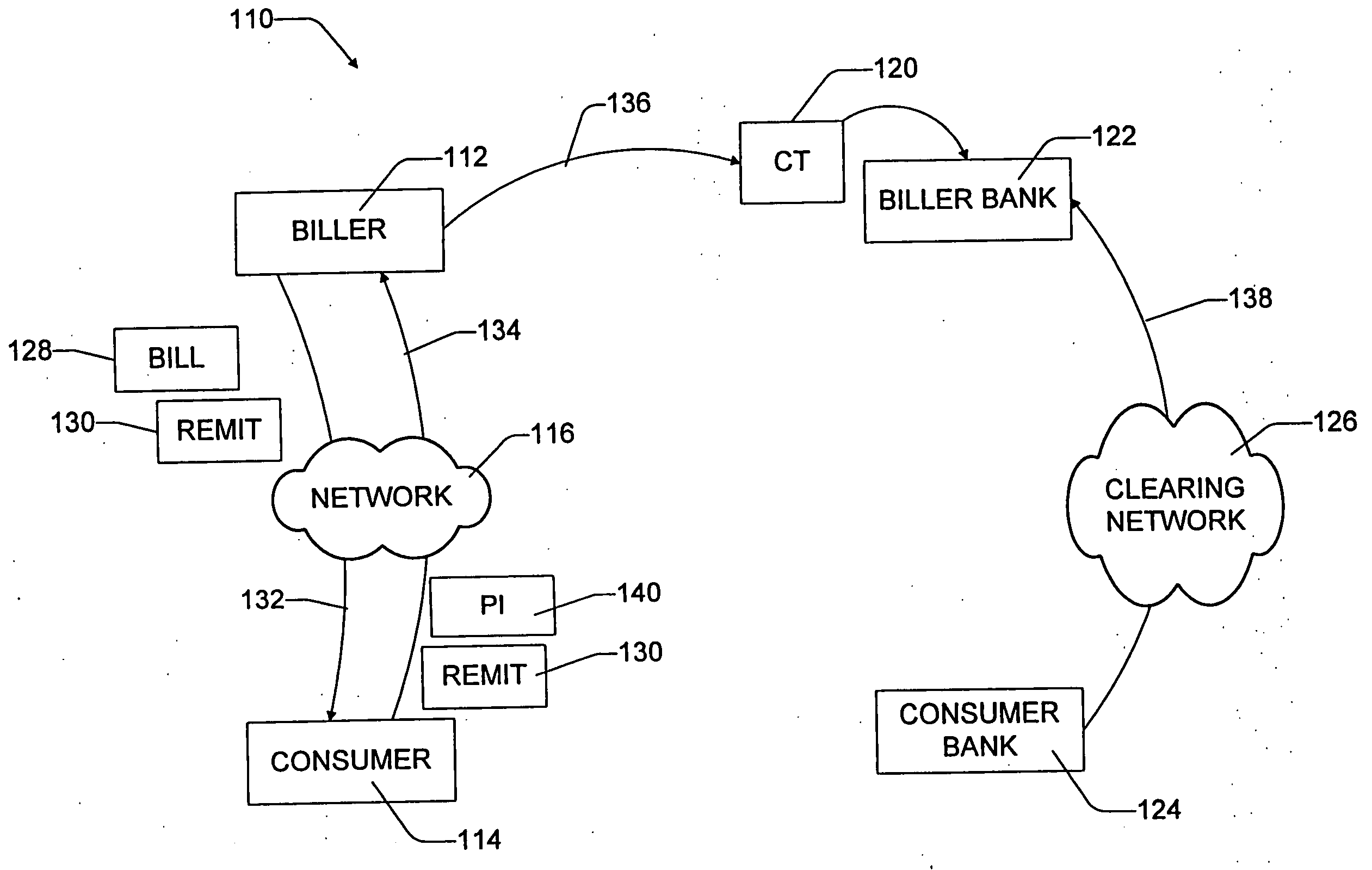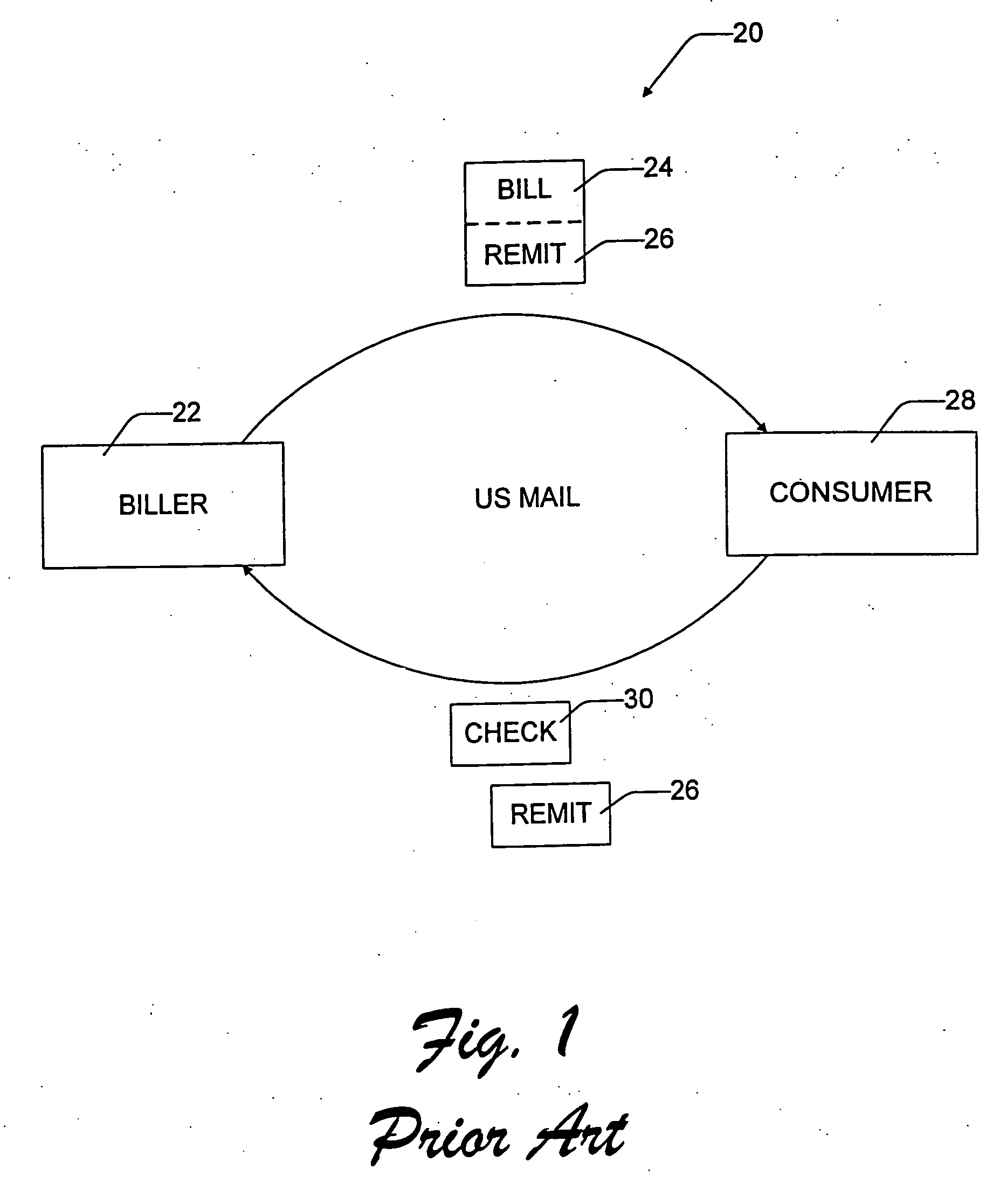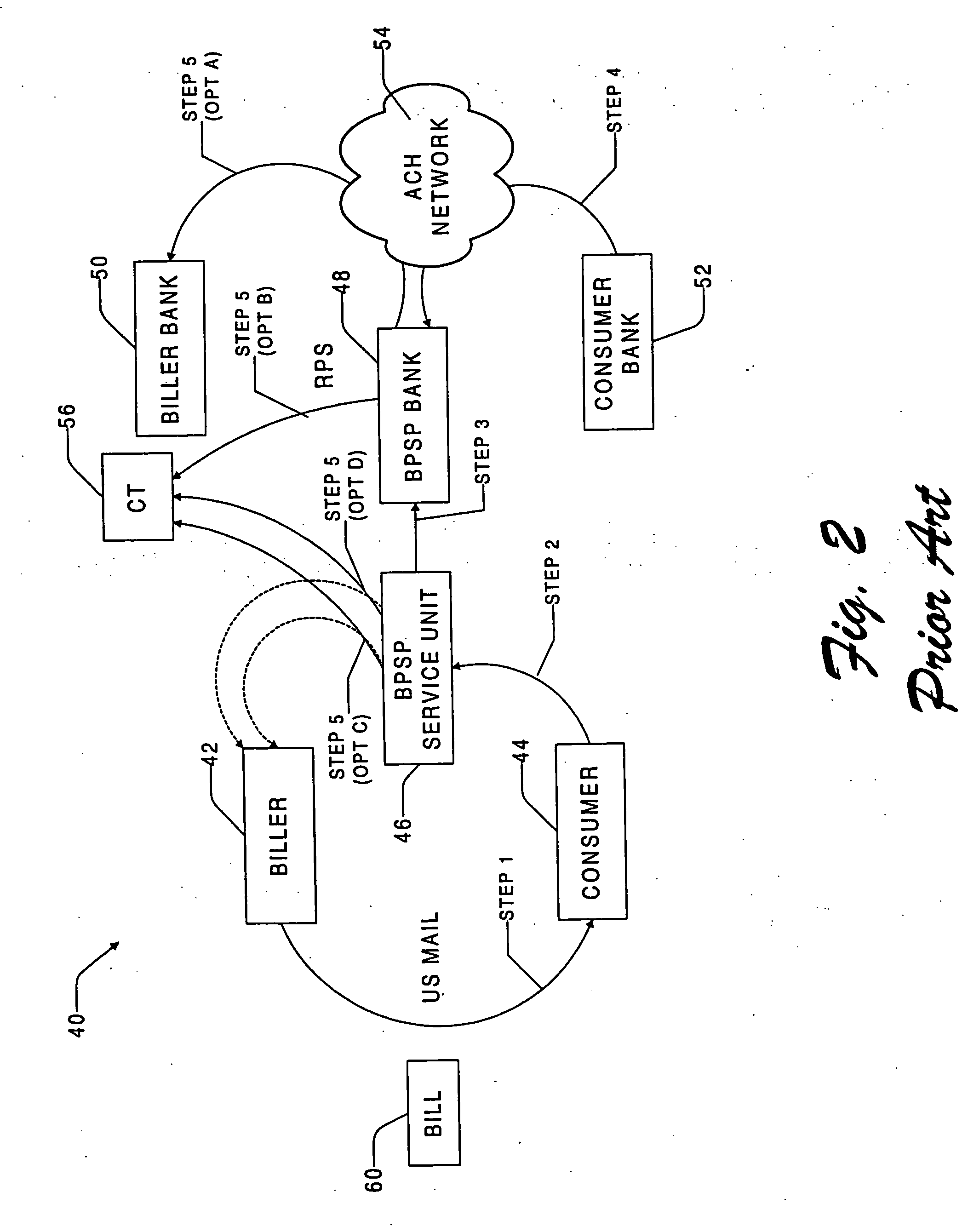Electronic bill presentment and payment system
a technology of electronic bill and payment system, applied in the field of electronic bill presentment and payment remittance system, can solve the problems of high cost of paper-based remittance information processing, high cost of paper-based remittance information delivery mechanism, and the inability to link payment to particular goods or services provided by the supplier, so as to reduce or eliminate the opportunity and slow down the remittance processing
- Summary
- Abstract
- Description
- Claims
- Application Information
AI Technical Summary
Benefits of technology
Problems solved by technology
Method used
Image
Examples
Embodiment Construction
[0052]FIG. 4 shows a bill presentment and payment remittance & settlement system 110 according to a first implementation of this invention. The system 110 includes a biller 112, a consumer 114, and a network 116. The bill presentment and payment system 110 is an electronic, computerized system having computing units at the biller 112 and consumer 114. For convenience, the pair of terms “biller” and “biller computing unit,” as well as the pair of terms “consumer” and “consumer computing unit,” will be used interchangeably throughout this disclosure and referenced by the same numbers. A detailed discussion of an exemplary implementation of a consumer computing unit is described below and depicted in FIG. 6.
[0053] The network 116 is an electronic data network. One preferred implementation is a public network, and particularly, the Internet. The Internet is a network formed by the cooperative interconnection of computing networks, including local and wide area networks. It interconnect...
PUM
 Login to View More
Login to View More Abstract
Description
Claims
Application Information
 Login to View More
Login to View More - R&D
- Intellectual Property
- Life Sciences
- Materials
- Tech Scout
- Unparalleled Data Quality
- Higher Quality Content
- 60% Fewer Hallucinations
Browse by: Latest US Patents, China's latest patents, Technical Efficacy Thesaurus, Application Domain, Technology Topic, Popular Technical Reports.
© 2025 PatSnap. All rights reserved.Legal|Privacy policy|Modern Slavery Act Transparency Statement|Sitemap|About US| Contact US: help@patsnap.com



